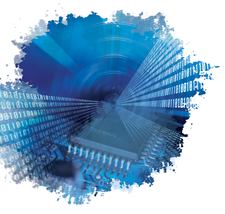Make off-site backups or you will lose your data
Backup Pains

Who needs attackers when you have system administrators? Learn why copying your data doesn't mean you've backed it up.
As I write this column, I cannot help but reflect on the irony of just having wiped out a month's worth of data. In the spirit of this article, I was fiddling around with backups on my web server, and I managed to accidentally delete most of /var/ and all of the /home/ directory. This wouldn't have been so bad if I hadn't kept the daily backups in /home/backups/. Oops.
Backing Up Doesn't Always Mean You Have Backups
If your data isn't available, or the systems to process and serve it aren't available, you have a problem. In the case of my web server, the missing /var/ and /home/ render it pretty much useless. It serves 404s and that's pretty much it. To make sure data is available, you need to back it up. Seems simple right? In reality most of us (myself included) get it wrong, and although we go through the motions of making a backup, what we're really doing is just copying the data somewhere else that is equally vulnerable to loss.
In my case, I made a classic mistake of storing my backups on the same system that the data being backed up is on, and to make things worse, I actually kept it in a commonly accessed directory. Not that this would have mattered. Because the server only has one hard drive, I am only a single disk failure away from complete data loss no matter how much I back my data up locally on the server. Even if I were to install a second hard drive in the machine, it's still all too easy for a single event (bad drive controller, attacker wiping the system, fire, flood, power supply going bonkers, theft, etc.) to wipe out more than one hard drive.
[...]
Buy this article as PDF
(incl. VAT)
Buy Linux Magazine
Subscribe to our Linux Newsletters
Find Linux and Open Source Jobs
Subscribe to our ADMIN Newsletters
Support Our Work
Linux Magazine content is made possible with support from readers like you. Please consider contributing when you’ve found an article to be beneficial.

News
-
Happy Birthday, ADMIN Magazine!
ADMIN is celebrating its 15th anniversary with issue #90.
-
Another Linux Malware Discovered
Russian hackers use Hyper-V to hide malware within Linux virtual machines.
-
TUXEDO Computers Announces a New InfinityBook
TUXEDO Computers is at it again with a new InfinityBook that will meet your professional and gaming needs.
-
SUSE Dives into the Agentic AI Pool
SUSE becomes the first open source company to adopt agentic AI with SUSE Enterprise Linux 16.
-
Linux Now Runs Most Windows Games
The latest data shows that nearly 90 percent of Windows games can be played on Linux.
-
Fedora 43 Has Finally Landed
The Fedora Linux developers have announced their latest release, Fedora 43.
-
KDE Unleashes Plasma 6.5
The Plasma 6.5 desktop environment is now available with new features, improvements, and the usual bug fixes.
-
Xubuntu Site Possibly Hacked
It appears that the Xubuntu site was hacked and briefly served up a malicious ZIP file from its download page.
-
LMDE 7 Now Available
Linux Mint Debian Edition, version 7, has been officially released and is based on upstream Debian.
-
Linux Kernel 6.16 Reaches EOL
Linux kernel 6.16 has reached its end of life, which means you'll need to upgrade to the next stable release, Linux kernel 6.17.

